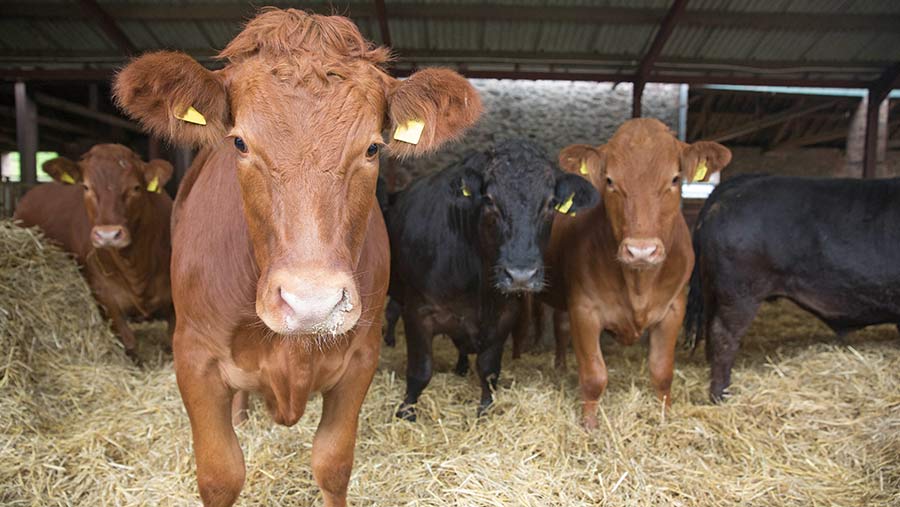Business Clinic: How much to rent a cattle finishing building?
 © Tim Scrivener
© Tim Scrivener Whether you have a legal, tax, insurance, management or land issue, Farmers Weekly’s Business Clinic experts can help. Here, Jon Dearsley of Savills advises on rental and agreement considerations for renting a cattle building.
Q: I have located a beef finishing building that is well equipped, in good order and unused. I plan to house 100 cattle from 10 to 24 months old in it.
Bedding, feed, labour and tractor inputs will be to our own account. Electricity and water is to be provided by the landlord.
The contract would be for five years – what would a fair rent would be, either per square metre, or per head and what is the usual basis for such agreements?
Also, is there anything else I should consider in the arrangement?
 Jon Dearsley
Jon DearsleyAssociate director
Savills food and farming
A: There are several considerations when taking on a building like this – all will affect the level of rent.
The rent will be determined by local competition. Other farmers may be interested and, depending on location, non-agricultural uses might also push up rents. The changes to permitted development rights (relaxation of planning rules for some buildings) make non-agricultural use much easier in many situations.
In terms of rent, £1.50-£2 a head/week is a guide which equates to about £1.50/sq metre. Ancillary services such as cattle handling facilities, straw storage, silage clamps and slurry stores will all affect value and demand from local competition.
See also: What are my options for vacant farm cottages?
Usually the landlord would recharge water and electricity in addition or place a cap on total usage, depending on how easy or not it is to measure.
Consider cashflow
Rent would often be paid in quarterly in advance but cashflow will need to be considered if renting the building is an expansion with cash also needed to purchase new livestock.
Muck for straw deals are still common but thought needs to be given to who is responsible for cleaning the sheds, spreading the muck and any NVZ requirements.
The five-year term means that a Farm Business Tenancy would likely be the best basis for an agreement. This will quantify each party’s liabilities, such as dealing with any slurry run off or what should happen if the water supply fails. Insurance responsibilities and damage to the building should also be covered in the agreement.
Assuming the barn is on a separate holding number, thought will need to be given to TB, especially if you are unable to move the stock at the end of the tenancy.
Making use of redundant resources is certainly appealing but any five-year commitment needs to be carefully considered by both parties before a commitment is made. A break clause at the three-year point may make sense for both parties, as would a provision for rent reviews. This would also allow for adaptation should legislation change over the next five years, for example tighter controls on pollution or disease.
Do you have a question for the panel?
 Outline your legal, tax, finance, insurance or farm management question in no more than 350 words and Farmers Weekly will put it to a member of the panel. Please give as much information as possible.
Outline your legal, tax, finance, insurance or farm management question in no more than 350 words and Farmers Weekly will put it to a member of the panel. Please give as much information as possible.
Send your enquiry to Business Clinic, Farmers Weekly, RBI, Quadrant House, The Quadrant, Sutton, Surrey SM2 5AS.
You can also email your question to fwbusinessclinic@rbi.co.uk.
